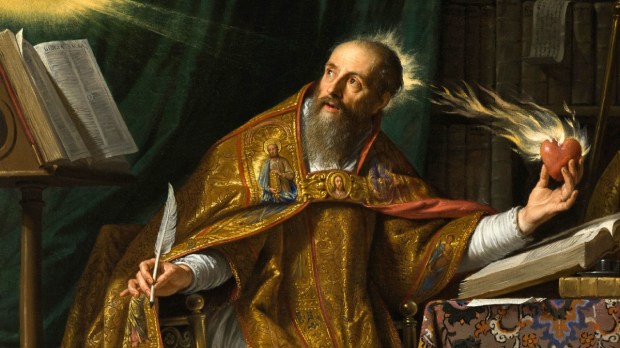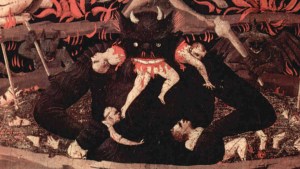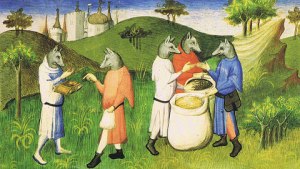One of Augustine’s favorite topics is that of infirmity. But, as is often the case, the original Latin infirmitas Augustine used can refer to many different things. Infirmitas, to begin with, translates “sickness.” When one is sick, one is infirmus: frail, weak, feeble, unable to stand on one’s own feet without help. The Latin is still clearly preserved in most Roman languages: “enfermedad,” in Spanish; “infirmitá,” in Italian; “infirmité,” in French. In sum, when one is infirmus, one clearly loses firmness.
But it is evident that one can be also weak and frail on matters not exclusively related to one’s bodily health. Augustine was witness to how the Roman Empire also grew weak and lost its seemingly eternal “firmness.” Some biographers claim his concern with the question of evil was motivated by his own personal experience, the shattering of the Empire included. But his own life, too, was rather infirm, as he was constantly shaken by grief. Augustine suffered successive significative losses, one right after the other —first his mistress, then his mother, and finally his son.
Shari Boodts explains how, in the Later Middle Ages, “an Augustinian sermon circulated that rather damages the present-day reputation of its author as a rational, intelligent, well-thinking man.” That is, it gives a rather infirmus impression of Augustine. At the end of the sermon, one reads:
“I was already Bishop of Hippo, when I went into Ethiopia with some servants of Christ there to preach the Gospel. In this country we saw many men and women without heads, who had two great eyes in their breasts; and in countries still more south, we saw people who had but one eye in their foreheads.”
The monstrous creatures Augustine describes in the sermon were pretty well known to medieval audiences. Most of them had been described not only in the Homer but also in Pliny’s Natural History, as much as in legends related to Alexander’s ventures in the East. But there is no record of Augustine ever going to Ethiopia (besides this sermon, that is). Unlike Paul, Augustine did not really travel much. In fact, one can tell from Confessions that he dreaded traveling, and was probably prone to being not only homesick but seasick. But even if he had been to Ethiopia, it is rather hard to believe that Augustine might have been infirmus enough as to actually claim he saw these creatures with his own eyes.
As Boodts puts it, “of course he didn’t.”
The fragment belongs to one of the hundreds of forged sermons that circulated in the Middle Ages using Augustine’s name. Signing one’s work with that of an already reputed author was a rather common way to guarantee the text was going to be widely read. And, for different historical reasons, it worked really well for this sermon in particular: it was included in the famous Sermones Ad Fratres In Eremo, the most widely-known Augustinian forgery of the Middle Ages, copied hundreds of times (even translated into vernacular languages), and way more famous than Augustine’s own Rule.
So, did Augustine believe in monsters?
Interestingly enough, the infirmity Augustine often referred to in his texts had to do with a very different kind of monstrosity: that of evil itself, which turns a rather healthy human being into an infirmus one. Over and over Augustine would repeat in his writings (in De Genesi ad Litteram in particular) that man had been made “upright in body, able to gaze at the stars and the sun and heavens.” This straight, erect, vertical dimension of the primordial human beings (Adam and Eve) was understood by Augustine as being the straight opposite of infirmity: man would lose its upright, firm stature when burdened and weakened down by sin. So, even if Augustine did not believe in monsters, he certainly had a very straightforward understanding of monstrosity itself.
View the slideshow below to discover seven of St. Augustine’s most insightful and inspiring phrases.




